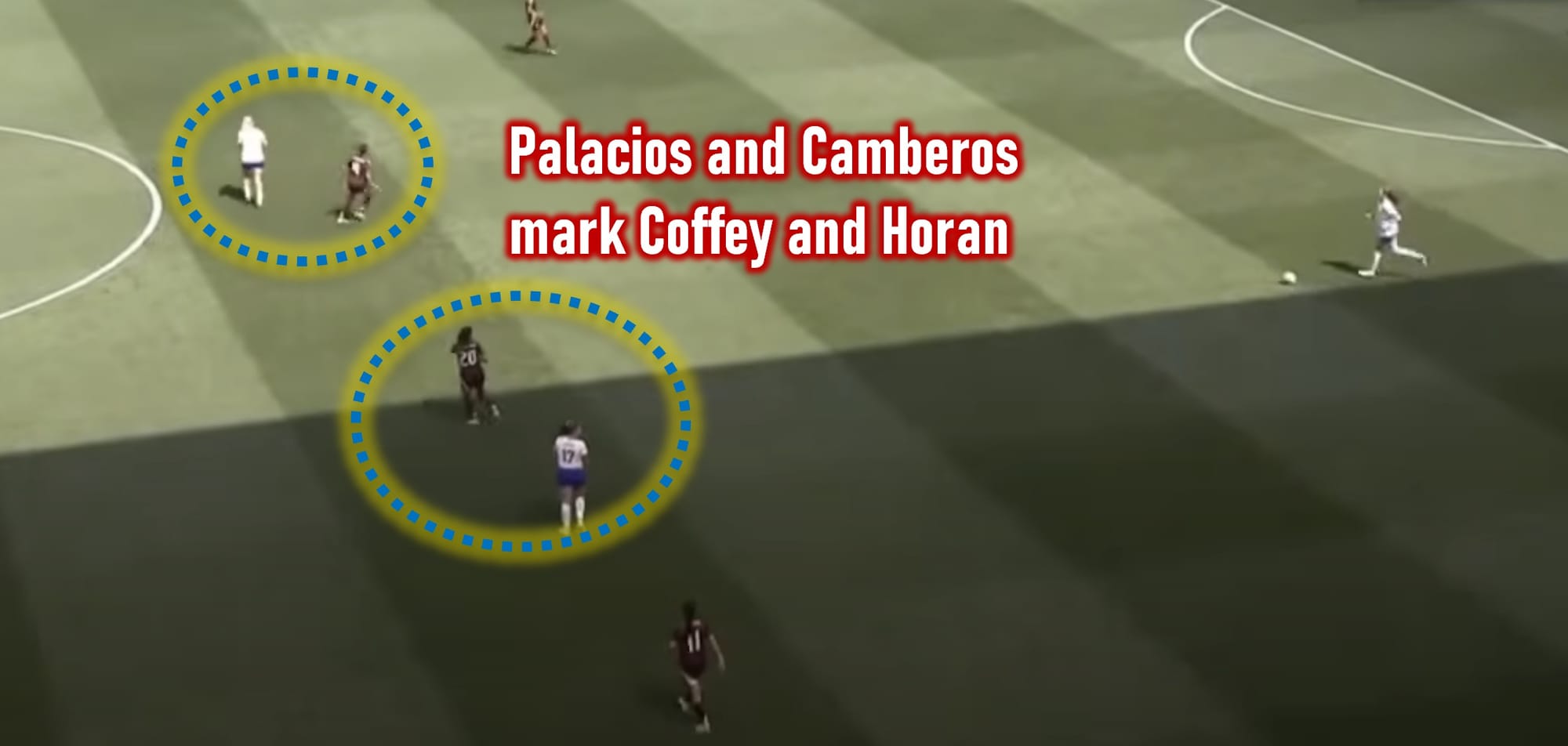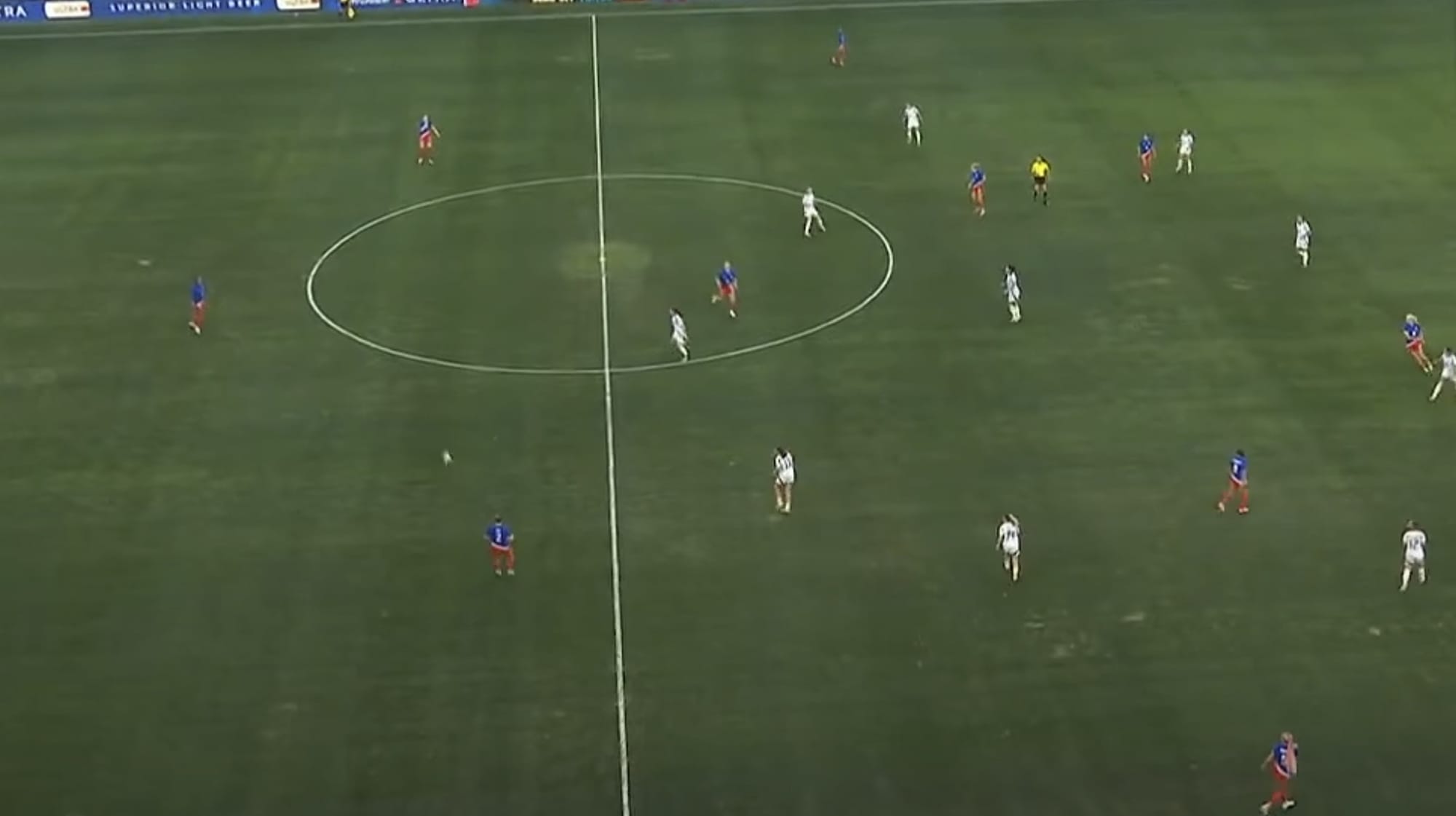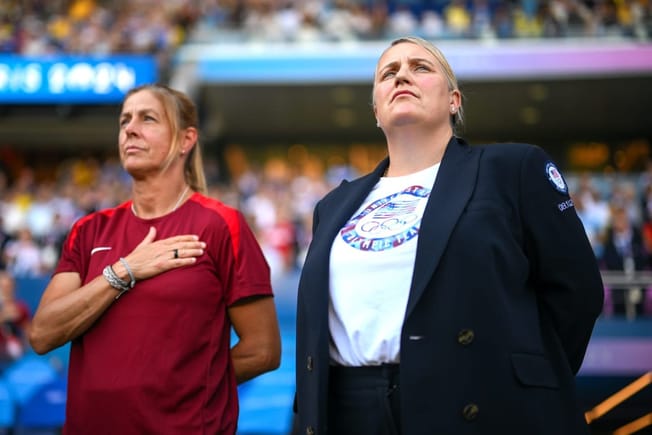The U.S. women’s national team finalized their preparation for the Paris Olympics with a pair of friendlies: a 1-0 win over Mexico on Saturday and 0-0 draw with Costa Rica on Tuesday.
These games had a familiar feel to segments of the last tournament cycle, as the USWNT struggled to break down defensive opposition. And while external factors like the heat, the field quality, and fluky poor finishing no doubt played a part, these displays also showed some areas to improve upon from a tactical perspective.
Let’s dive into some of the most interesting on-field nuggets that will also give us key things to watch at the Olympics.
Hayes' positional attack
On Saturday, Mexico defended in a 4-2-4 formation initially. Their striker, Kiana Palacios, dropped back to help Scarlett Camberos mark Sam Coffey and Lindsey Horan. The plan was clear: remove easy access for the U.S. to their primary playmakers. Every now and then Palacios would step up and press Tierna Davidson or Naomi Girma; at other times, pressure came from the wingers.
Against this unique and slightly unpredictable Mexican pressing, the quality of passing out from the back was largely poor. There were too many giveaways which prematurely ended the attack and gave dangerous opportunities to the opponent in transition.

On Tuesday, Costa Rica defended in a more conventional 4-1-4-1 and put less pressure on the U.S. defenders. In a friendlier environment with more time and space on the ball to set up and pick passes, there were fewer turnovers, but another problem presented itself, namely: breaking down the low block.
Costa Rica gave us a chance to see Emma Hayes’ attacking ideas more clearly. Emily Fox stayed back on the right side of defense while left back Crystal Dunn pushed up on her flank. Dunn and Trinity Rodman provided width, while Mallory Swanson roamed between the lines along with Horan and Korbin Albert. It was broadly speaking a 3-6-1 shape. Here’s an overview:







